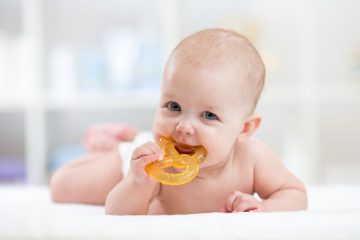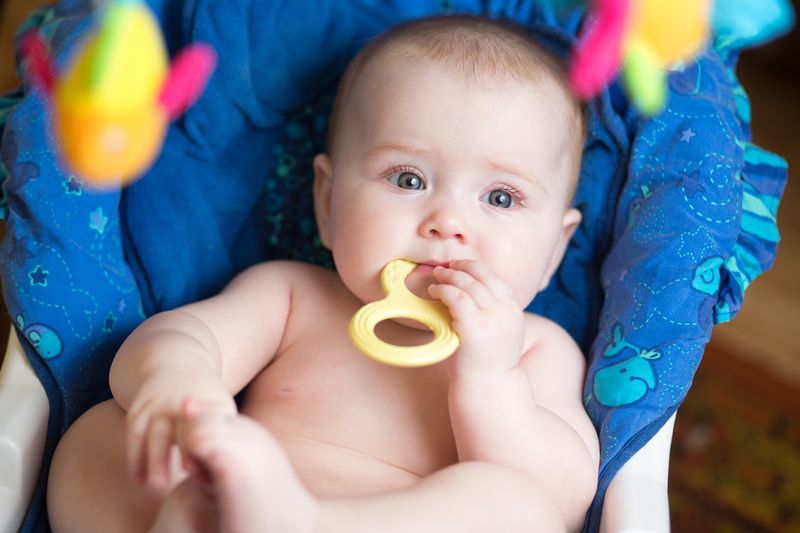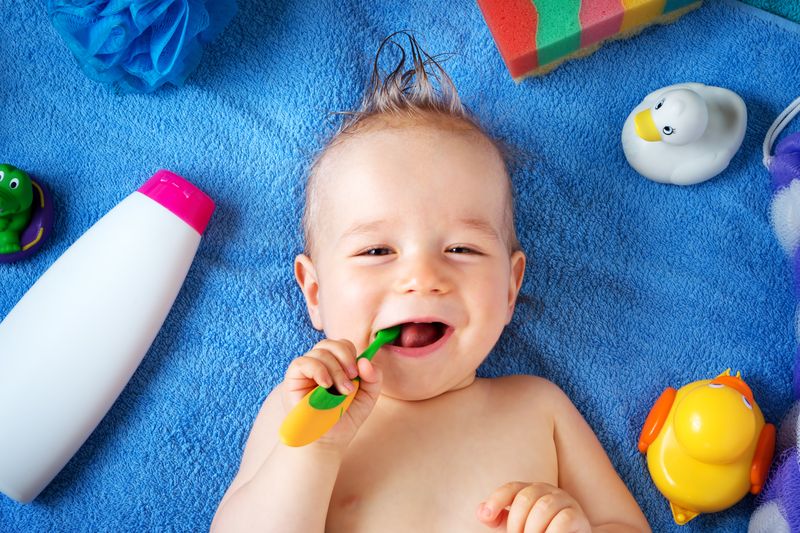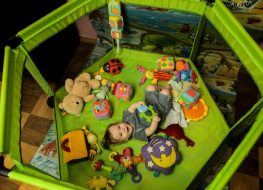
Parents will always wonder when their child’s teeth will grow out. This raises several other questions, such as whether or not it’s painful.
Teething is the one word that will answer these floating questions. But a more complicated answer is that teething doesn’t just happen as a single event—it comes in stages and yes, it is painful.
Luckily there are baby teething toys that will help your little one in every stage of the teething process. But, first, you have to determine your child’s current stage.
Stage 1
Infants are born with teeth; they’re just hiding inside their little gums. There’s a complete set of 20 teeth underneath your baby’s gums. From the time they come out of the womb up to their 6 month, these baby teeth will slowly begin to emerge.
Your baby’s gums will feel slight pain or itch during this time. So they will crave something to chew on. Over time, you’ll notice your little one craving breastfeeding frequently.
As a parent, you may not always satisfy this request. So to help those baby teeth come out, you’ll need to introduce a teething toy. This will help distract your baby from pain and will help them develop their oro-motor skills early.
Recommended Teething Toy: Pacifiers
Ashtonbee has a pacifier that can double as a baby teething toy for your little one. It’s 100% safe and suitable for infants from zero to six months. They can suck and chew on the teething toy’s rubber without the risk of choking.
Here are some features of Ashtonbee’s pacifier and infant teether toy.
- The pacifier’s teat is non-toxic and made of high-quality silicone.
- You can fill it with liquids such as breastmilk, crushed fruits, and juices.
- Ashtonbee’s pacifier has an easy grip handle for your baby to hold so they can remove it easily if they feel uncomfortable.
Additionally, a pacifier can also be a conditioning tool for eating solid food. You can find out more about it in this article.

Stage 2
You’ll notice a few white bits sprouting from your baby’s gums at around six to eight months. Normally they’ll be located in the middle front part of your baby’s mouth.
Incisors are the most common teeth to grow first, but this may also vary. What remains the same is that your baby will now have sore gums due to the teething process. They’ll need a harder teether toy to satisfy those growing tooth pains.
This stage is also when they start learning how to pick up objects and put them in their mouth. The oral fixation will start to strengthen, so they start feeling things using their mouths. You’ll need to ensure their mouth and gums are preoccupied with a clean object for their health.
Recommended Teething Toy: Teething Ring
Ashtonbee’s teething ring has plenty of design similarities to the pacifier. The parts are almost the same except the teat is replaced. It now has a larger, more textured tip and a smaller round grip stem.
This makes the transition effortless. The teething ring will feel familiar to your little one, yet it will introduce a new tactile experience to satisfy their curiosity while soothing their aching gums.
Here are other things you can expect from Ashtobee’s teething ring.
- Silicone beads on the teether toy’s tip for sensory play.
- It is 100% non-toxic and Food and Drug Association (FDA) approved.
- Comes in a pack of two pieces, each with different designs.
Stage 3
As your child reaches between 10 to 14 months, there will be significant changes in teething behavior. There will be a lot of drooling involved. Mouth use is intensified by the desire to chew on everything.
From the parent’s perspective, you will see tangible changes, too. Your baby’s molars will start to become more prominent during this stage. You’ll notice more frequent crying due to aching gums. Furthermore, if pain becomes severe they may lose appetite or develop complications exhibited by a slight fever.
This stage requires a more readily available teething toy that their little hands can pick up and drop conveniently. A toy with a different texture and a fun design should also be delicate enough for their sore gums to chew on.
Recommended Teething Toy: Teething Toy Wand
The best toy for teething at this stage is Ashtonbee’s baby teether wand. This design gives your baby more autonomy to exercise those little hands. The curved holder is replaced with a long stick and stand, and the silicone teether’s tip has a purposeful design and texture.
It’s the kind of teething baby toy that will introduce your child to eating soft and solid food such as fruit and vegetables.
Here are some highlights of this awesome teething toy.
- You can store it in the freezer to give your baby a cold sensation that will soothe their gums and mouth.
- Its durable, one-piece design makes it safe for babies and toddlers to hold and chew on.
- It’s 100% free of toxic materials.
Stage 4
During this stage, which occurs around the 16th to 22nd months, several other teeth will start to come through the gums. The canine teeth—the ones between the incisors and the molars—will cause more aching gums, and your child will experience SIMILAR symptoms as those in the third stage.
Recommended Teething Toy: Teething Ring and Wand
At this point, you can play around with either the teething toy wand or the teething ring to continue helping them soothe the pain. It also helps to vary their teething toys to satisfy their curiosity.
Apart from switching to different silicone teether toy designs, you can start introducing soft food as you see fit or as your child’s pediatrician recommends. This may help further develop their oral motor skills and tactile sense.

Stage 5
In this final stage, your baby may have most or all of their baby teeth showing. This early toddler stage of teeth and oral development happens between 25 to 33 months.
Your toddler will still experience pain and itching as the full set of “milk teeth” are still growing out of the gums. So they may still need a teether toy. In addition, they may find it difficult to let go of the teethers they’ve grown accustomed to chewing on.
You’ll need to start transitioning them from chewing baby teethers to eating solid food. So the teether toy you need will be unconventional.
Recommended Teething Toy: Baby Spoons
It’s unorthodox to use baby spoons as teething toys for toddlers. But it can work, especially with Ashtonbee’s baby spoons. Here’s why.
- Its head is still made of the same silicone material the teether is made out of.
- It’s also non-toxic.
- It serves as a teething instrument and a tool for scooping out soft food items that your baby can eat.
Spoons can be introduced to babies as early as six months. But the type of spoon may vary depending on how early you train your child for it. You can read further on how to choose the best first spoon for your baby if you want to learn more.
Ashtonbee Teething Toys for Every Stage of Teeth Development
Whatever stage your child is at in the teething process, Ashtonbee offers the best baby product that will help them. Everything is made teething-friendly, from pacifiers, teething rings, toys, to spoons. So you can be sure your baby is safe and comfortable at every step of their growth.
Check out these teething products now and pick the ones you think will work based on the teething stages we mentioned. For more information, check out the rest of our blogs. Happy parenting!



